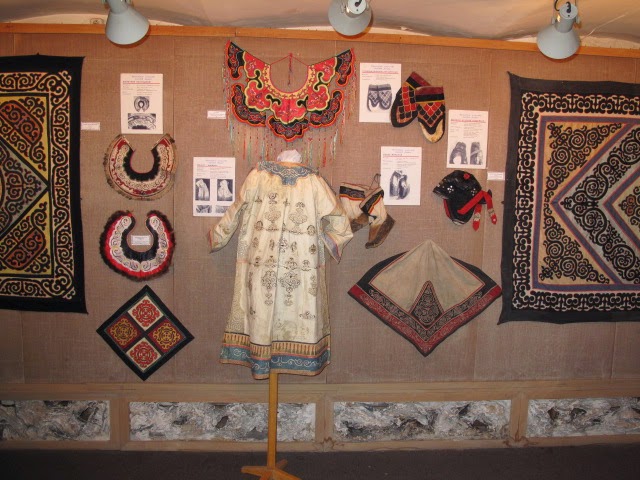First let me cite the description about the Sycachi-Alyan petroglyphs from the web site of "Amur Region Historical Heritage Fund<(1)> "
"The Sycachi-Alyan petroglyphs are the disguise masks of the animals, birds, snakes, boats, pits with concentric circles; anthropomorphic images. In total, there had been found 300 drawings (presently only 160 are left). The images are created by the stone instrument by a deep channeled striking method and by the iron tool in a threading style technique. The graffiti belonged to the Mesolithic time (early Neolithic), early Iron Age and early Middle Age and are dated the 12 millenniums B.C. to first half of the millennium 1 A.C."
I don't know how the creations of these 300 drawings found in total lined up chronologically, but looking at the several Sycachi-Alyan rocks displayed at the front garden of the Archaeology Museum, it seemed that there were two prominent eras in which the Ancient inhabitants particularly got frantic about the rock arts with more than 5,000 years separating them.
Mesolithic era (early Neolithic, 10-13 millenniums ago)
In Mesolithic, when the art of clay pottery production was still unknown in the Lower Amur, the first carvings of animals and birds had appeared on the Sycachi-Alyan stones. These elks, horses and oxen are, most likely, the samples of the ancient fauna of the Lower Amur.
Bellow are the Sycachi-Alyan rocks at the Archaeology Museum; The museum signboard says in Russian that they are "the most ancient rock carvings (petroglyphs) created in the Early Neolithic (10-13 thousand years ago)"

Neolithic era (6-5 millenniums ago)
In the Neolithic, a culture of the fisherman and hunters was developing. A particular feature of the neolithic culture is rich developed curvilinear ornamental: spirals, "Amur wicker-work" (a net from the interweaving curved lines). In Neolithic, and maybe even earlier, the anthropomorphic drawings had appeared - masks or disguise, that can be seen on the Sycachi Alyan stones.

Various masks on the rocks;

Actually, I see more elaborate and thinner curves on more abstract images in the creations of Neolithic. I imagined that this advancement were brought about by the development of their striking tools along with the change of their aesthetic appreciation.
I looked for the Nanai souvenir shop in Khabarovsk to know the arts and crafts of modern Nanai people. Could we identify any similarity between the images on the Sycachi-Alyan rocks and these modern arts by today's Nanai artisans?

(to be continued)




No comments:
Post a Comment